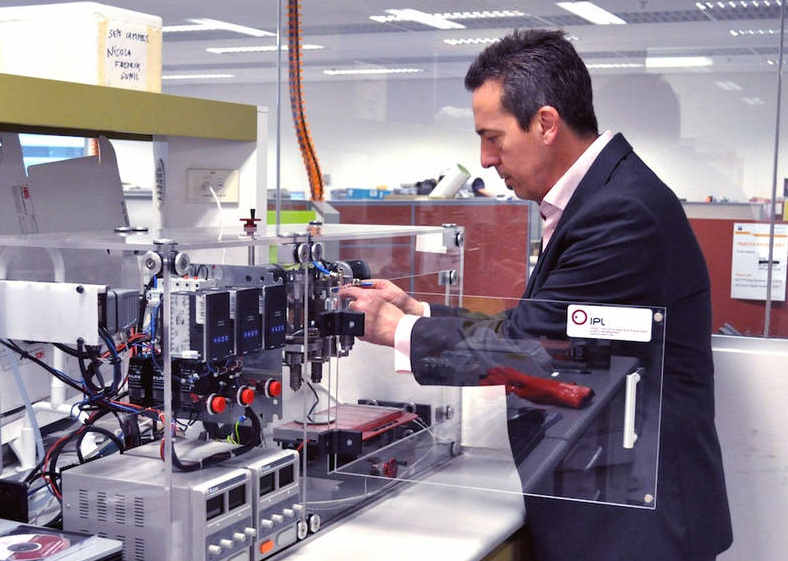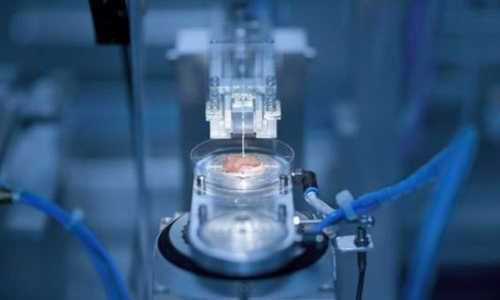Focusing on the difficult case of restoring cartilage, which requires both flexibility and mechanical strength, the researchers investigated a new combination of 3-D printed microfiber scaffolding and hydrogels. The composites they tested showed elasticity and stiffness comparable to knee-joint tissue, as well as the ability to support the growth and cross-linking of human cartilage cells. Researchers at the Technische Universität München (TUM) expect the new approach to have an impact on other areas of soft-tissue engineering research, including breast reconstruction and heart tissue engineering.
Based at the Queensland University of Technology in Australia, Prof. Hutmacher is a Hans Fischer Senior Fellow of the TUM Institute for Advanced Study. Image: D. Hutmacher / QUT
A new 3-D printing technique called melt electrospinning writing played a key role, simultaneously providing room for cell growth as well as the needed mechanical stiffness. This method offers much more freedom in the design of scaffolding to promote healing and growth of new tissue, explains Prof. Dietmar W. Hutmacher, one of the lead authors. “It allows us to more closely imitate nature’s way of building joint cartilage,” he says, “which means reinforcing a soft gel – proteoglycans or, in our case, a biocompatible hydrogel – with a network of very thin fibers.” Scaffolding filaments produced by melt electrospinning writing can be as thin as five micrometers in diameter, a 20-fold improvement over conventional methods.
Based at the Queensland University of Technology in Australia, Prof. Hutmacher is a Hans Fischer Senior Fellow of the TUM Institute for Advanced Study. His TUM-IAS Focus Group on Regenerative Medicine is hosted by TUM Prof. Arndt Schilling, head of the Research Dept. of Plastic Surgery and Hand Surgery at TUM’s university hospital Klinikum rechts der Isar.
Multi-pronged study of a versatile technology
The collaborators – working in Australia, Germany, the Netherlands, and the UK – brought a wide range of research tools to bear on this investigation. Efforts focusing on the design, fabrication, and mechanical testing of hydrogel-fiber composites were complemented by comparisons with equine knee-joint cartilage, experiments with the growth of human cartilage cells in the artificial matrix, and computational simulations.
All the evidence points in the direction of what Hutmacher calls, cautiously, a breakthrough. Having validated the computer model of their hydrogel-fiber composites, the researchers are using it to assess a variety of potential applications. “The new approach looks promising not only for joint repair, but also for uses such as breast reconstruction following a post-tumor mastectomy or heart tissue engineering,” Prof. Hutmacher says. “We need to implant the scaffolding under the muscle, and fiber-reinforced hydrogel could prove critical in regenerating large volumes of breast tissue, as well as the biomechanically highly loaded heart valves.”
Story Source:
The above story is based on materials provided by Technische Universität München.






